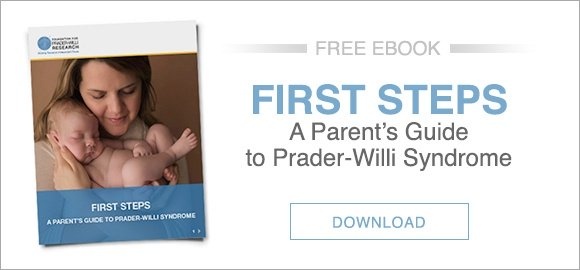This blog contains excerpts from My Journey through the Special Education System, a presentation by FPWR Board Member Tanya Johnson at the FPWR 2017 conference about education for children with PWS, including IEPs (individualized education programs) and other topics relevant to school-aged children. You can watch the full presentation by clicking on the embedded video below.
In case you don't have time to watch the full video, we've captured some of the key points in the notes below.
Tanya is a Special Education Resource teacher in high school and works with students of various abilities, including autism and developmental disabilities. She is the co-founder of FPWR Canada and founder of the One SMALL Step Walkathon. She has two sons, the oldest of whom, Dante, has PWS.
Should You Put Your Child in a Regular School?
The answer is: it depends. People with PWS are on a spectrum, and you don’t know a child’s grade or skills level until they’re tested. The psychological assessment that’s done at age 4 or 5 is not accurate because the kids are too young and their minds are still developing. It's not until they hit age eight, nine or 10 that their brain is developed enough to get a true cognitive measure.
Takeaway Recommendation: Start your child in school with full inclusion – in a regular classroom – and see how they do. Set the bar high when they’re young and keep it as high as possible throughout their education, understanding that their abilities will shift over time.
How Do You Make Inclusion Work?
- Educational assistant and classroom support
- Modification vs. accommodation
- Social inclusion (gym class, parties, trips, etc.)
- Roles and responsibilities (i.e, make them the scorekeeper of the basketball game or referee if they can't play with the other kids)
- Collaborative approach (group work)
Should You Disclose Your Child’s Diagnosis?
Yes, because:
- Modifications in classwork can be made if the teachers and aides have the right information.
- It’s a safety issue for your child, particularly when it comes to food.
- The school can take a collaborative approach to educating your child, bringing together a team of physical therapists, speech therapists, etc.
Include a Health Plan with Your IEP
While the IEP details educational requirements, the Health Plan is a way to communicate to the school what it wil take to keep your child safe. It can include information such as:
- Details about food intake requirements
- Notification requirements, such as parents must be told five days in advance of any class event involving food
- Requests for information on how often they went to the bathroom and what happened
- The importance of a food-free environment and not providing food as a reward for behavior or achievements
- Expectations of what happens on the bus on the way to and from school
Your Health Plan or IEP Can Include a Communication Book
The book is a way for educators and therapists to keep parents updated on what's happening at school. In order to get the communication book into your IEP, you’d need to request a meeting.
The book can include information such as:
- Summaries of therapy sessions
- Bathroom break information
- Responses: As parents, be sure to write back every time
Create a Vision Board for Your Child for Each School Year
- If your child is old enough, have them help create it
- Share with teachers and school staff at the beginning of the year
- Share with outside activities, sports, camp, etc.
- Include strengths and needs
- Say what works and what doesn’t work for your child
- Set goals for different categories: learning, social, etc.
Education Advocacy – Maximizing Learning Potential
(Facebook Group Questions: Group has about 770 members)
- What are some inclusive strategies that bridge the gap between mainstream and special needs students?
- What should I do when the school is not following my child’s IEP?
- What are the pros and cons of telling or not telling your school of your child’s diagnosis?
How Can We Make Sure IEPs are Being Followed?
- Use data tracking to measure progress
- Track whether goals are being met
- Escalate to the principal if requirements aren't being adhered to
- Ask for regular meetings to track progress, behavior
Tips for Building a Relationship with School Personnel
- Position yourself and school staff as partners in your child's education
- Empathize that they have tough jobs
- Be present when things are going well, too: give compliments, not just negative feedback
- Be gracious and grateful








